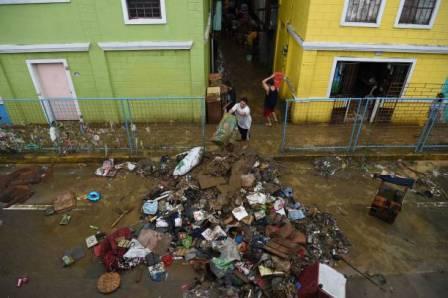Berhampur: Tales of distress and despair continued to pour in waterlogged parts as people were welcomed with their homes filled with huge mounds of mud and dirt left by the receding flood waters. Destroyed furniture, plastic bottles, logs and utensils awaited the people inside and outside their houses.
Even as water level has decreased, the receding flood waters have brought more trouble. People are staring at an overwhelming task of clearing out days of sludge and water from their homes and salvaging their lives.
Residents have to now deal with huge deposits of sand and muck inside filled in their homes. Many are left with no clothes.
Even as water has receded but the walls still carry the watermarks of flood-ravaged. Most electronic equipment in the homes was damaged; dress materials, kitchen utensils and even important documents/certificates were scattered across the floor or in the yards. Motor vehicle engines were dead.
Wells, on which most homes usually rely for drinking water, are still filled with waste water. But even for those whose houses are intact, it will take many more days before they can start a new life. People from relief camps have returned to their homes to begin cleaning.
A villager explained the horror she experienced on the morning of Wednesday when the water level began to rise rapidly.
“It was at around 6 am in the morning; my kids were still sleeping. The water had reached the compound but was no higher than ankle-deep at that point. But it appeared normal to me since this happens in years when it rains heavily. But, in the next 10 minutes, the water level surged to around four feet and had covered most of the house. By around noon, three-quarters of the building was under water and we knew we were trapped. The idea of death wasn’t a faraway possibility,” Divya’s eyes reflected the horror as she recounted the tragic hours.
But her family managed to move out of the house to a safer location on the same day with help of neighbours. Around 500 people in the village, who chose to stay on their terraces, hoping for water levels to drop, weren’t that lucky. They had to be rescued on the third day by a navy rescue team. There were infants and pregnant women among those who were trapped.
“By the third day, most of them had fainted on the rooftops for lack of food and water. There was no way to communicate with rescuers as telephone and internet networks were down. The space was barely enough to stand on the rooftops, so no one slept during those frightening hours,” she added.
It will take many more days or perhaps weeks to return to normal life. Roads have been damaged and filled with fresh potholes in many places. It will take time to restore the loss suffered by the public.
PNN
